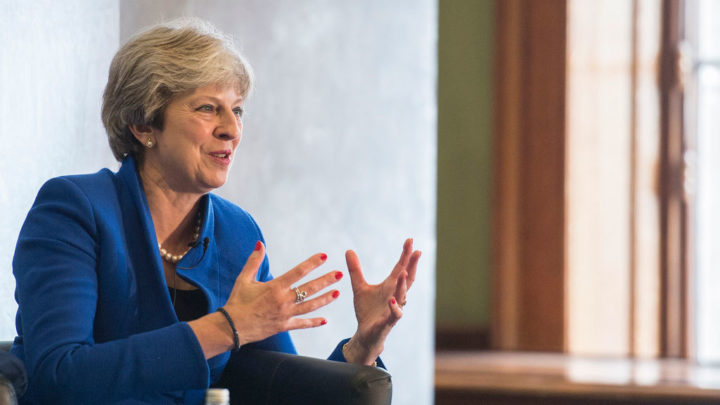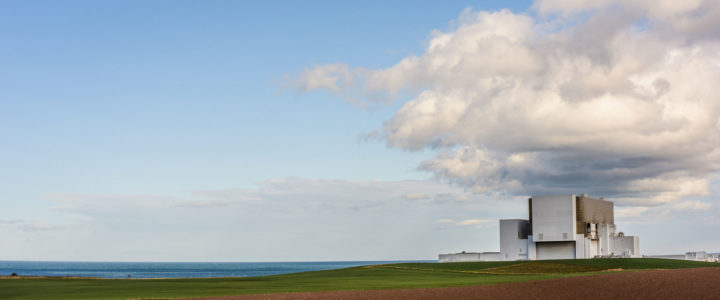Why will the Big Six shrug off an energy price cap?
Any cap on standard tariffs will have either little or no effect on overall profits across the Big Six.
By Matt Finch
Share
Last updated:
Theresa May’s announced price cap on energy bills was one of the highlights of her closing speech of the Conservative Party Conference in Manchester this week. She specifically said that the energy market “punished loyalty with higher prices”, putting the blame squarely on Standard Variable Tariffs (SVTs) in the domestic (i.e. household) market. This was confirmed by a CCHQ briefing note. But is this justified? Are SVTs the problem? Is there even a problem? After all, Eon recently announced that it is abandoning its SVT next year anyway.

When it comes to UK household electricity, the market is still dominated by the Big Six. Between them, they have 83% of the electricity market, and 81% of the gas market. However, this is not evenly split. The market is actually the Very Big One, plus the Medium Five. British Gas/Centrica dominates with 22% of the electricity market, and 34% of the gas market (as of Q1 2017, but it should be noted that it is losing customers - some 387,000 customers in the first half of this year to be precise. Ouch). The rest lag behind, and broadly have the same market share as each other: EDF (12% and 8% respectively), Eon (14,10), nPower/RWE (9,8), Scottish Power (11,9) and SSE (15,12).
But is the energy market broken? Are prices too high? If they were consistently too high, this would suggest the Big Six are highly profitable companies. Comparing their profitability is actually quite easy, as they are all required to send standardised financial information to Ofgem each year. And we’ve collated that information, so you don’t have to (and if you’re a spreadsheet nerd, take a look)
Profit margins
So let’s start with Centrica (because after all, a Centrica price rise/cut affects the most people).

It declared to Ofgem that its electricity supply arm actually lost money for the past two years, suggesting its 12.5% price rise in August was partly justified. However, its gas supply arm (of which, remember, fully one third of us have a vested financial interest in) made nearly three quarters of a billion pounds in EBIT (Earnings Before Interest and Taxes) profit last year alone - an EBIT margin of 14%, which is almost double the average margin (7.4%) of the other five (EBIT margin is the percentage of EBIT to revenue). The losses of its electricity arm are more than covered by the profits of the gas arm, which begs the first competition-related question - if Centrica had to raise its electricity prices, could it not have lowered gas prices? After all, lower prices may actually increase profits by capturing more market share? Maybe this is being hard on Centrica though. Again, using Ofgem’s standardised figures, it actually already had the cheapest SVT dual fuel rate. This would suggest that any price cap may end up not applying to Centrica anyway.
Taking a longer view back in time, Centrica’s gas and electricity supply EBIT margins over the last four years averaged 5.6%. Is this high? A quick look at the average four-year EBIT margins of the medium five supply arms would suggest so - they average less than half of Centrica, at 2.7%. Compare these figures to other industries though, and 5.6% is not particularly high. The pharmaceutical industry regularly posts double digit margins, and in the financial world, asset management companies were scolded by the Financial Conduct Authority for having average margins of 36%. In the UK's energy world, only the electricity district network operators make numbers even close to 36%. So should we be worried about Centrica’s 5.6%? The data suggests we should not.
Looking at the medium five gives mixed messages also. EDF made a small loss selling electricity to households for three of the four years analysed, but this is more than offset by other parts of the business (more on that below). nPower has also been losing money, except its losses are getting progressively worse and worse (losing £125m last year, up from losses of £102m the year before, giving worrying EBIT margins of -9% and -7%. All of the others are seeing their profits being diminished year-on-year. Eon’s EBIT profit margins have fallen from £179m in 2013 to £65m last year. Over the same period Scottish Power has fallen from £138m to £49m, and SSE has fallen from £92m to £41m. Whilst these numbers all seem large, remember these are exceptionally large companies - they sell commodities that every household uses nearly every day (and furthermore, they then have to pay some tax out of the amounts). In margin terms, these figures are actually very low.
So there is a conundrum here. Due to the customer numbers, any energy market intervention has to be viewed as a direct intervention against Centrica, but it has been losing customers anyway. The medium five don’t make particularly large profit levels. Still the market is, allegedly, broken. But competition seems to be actually working. The smaller suppliers are certainly gaining market share. Just five years ago the Big Six had almost 100% of the market. At current rates nPower will be overtaken by First Utility in (electricity) market share in the next few years anyway, blowing away the Big Six moniker in one stroke.
Generating controversy
There is, however, a large elephant in the room. What has not been discussed so far is that all of the Big Six both a) sell to business, and b) have generation arms. The household supply arms are but one part of their businesses, and if we look at all the business units together these change the picture completely.

For a start, Centrica stops being so dominant. Eon, EDF, nPower and SSE all sell more electricity by volume to the nation's businesses than they do to households. However more volume does not translate into more revenue. In fact, one striking figure jumps out that backs up the broken household market meme. On average over the last four years, cumulatively households have paid £141m per TWh, whereas businesses have paid £103m - a massive 37% difference. Why? The generally accepted reason for this is that businesses are larger, so can negotiate better deals, but the flipside of that statement is that households are weaker and are therefore being punished for their size. One question that should be asked is why is there such a large difference? Perhaps a government-forced cap is actually needed?
One thing to note is that for supposed vertically-integrated companies, some of them aren’t that vertically integrated. With the exception of EDF, none of the Big Six generate as much electricity as they sell to consumers. In Centrica’s case, it has actually been selling its generation assets at a rapid rate. Managing Director Ian Conn has clearly decided electricity generation is not the future of Centrica. Take account of the fact that Centrica own Hive, and could this be the first big example of a big company fully embracing the decentralised, digitised future world that some ecomodernists dream of?
When looking at generation figures, it's hard not to focus on EDF. EDF’s average generation EBIT profit per year over the last four years is three quarters of a billion, and this equates to an average margin of 17.8%. Only SSE comes remotely close to these figures, making ‘just’ £420m per year from generation. Perhaps the Prime Minister should question why British households are paying the French Government so much? (EDF stands for Electricity de France, and 83% of EDF is owned by the French government.) Especially as EDF originally bought its nuclear plants from the British Government itself in 2008, for a what now seems a measly £12.8 billion. In fact, EDF’s generation margins over the last four years have all been over 16%, whereas its highest supply margin (household and business) has been just 0.47%. This almost begs the question, why does EDF bother being in the supply market at all?
Taking account of all parts of the business changes thinking. On overall EBIT profits, there suddenly becomes a Big Three, a Middle One and a Tiddly Two. Centrica profits averaged £710m, EDF's were £773m and SSE’s were £729m. Scottish Power came in at £274m, whereas the tiddlers are RWE with £31m and Eon with -£112m. Again, big numbers, but they are big companies, so again the better metric is the overall company EBIT margin. The big three of Centrica, EDF and SSE have figures of 5.8%, 7.1% and 8.4% respectively. Scottish Power is 5.2%, and the tiddlers are 0.29% (RWE) and -1.2% (Eon). Taking all areas of the business into account demonstrates that there are clearly three companies that matter more than the other three.
All these figures tell us is that the energy market is vast, and it is profitable, but it is controversial to say that it is ‘too’ profitable. Whether or not profits should come down further is subjective, but the simple truth is that any cap on SVTs will have either little or no effect on overall profits across the Big Six.
Share